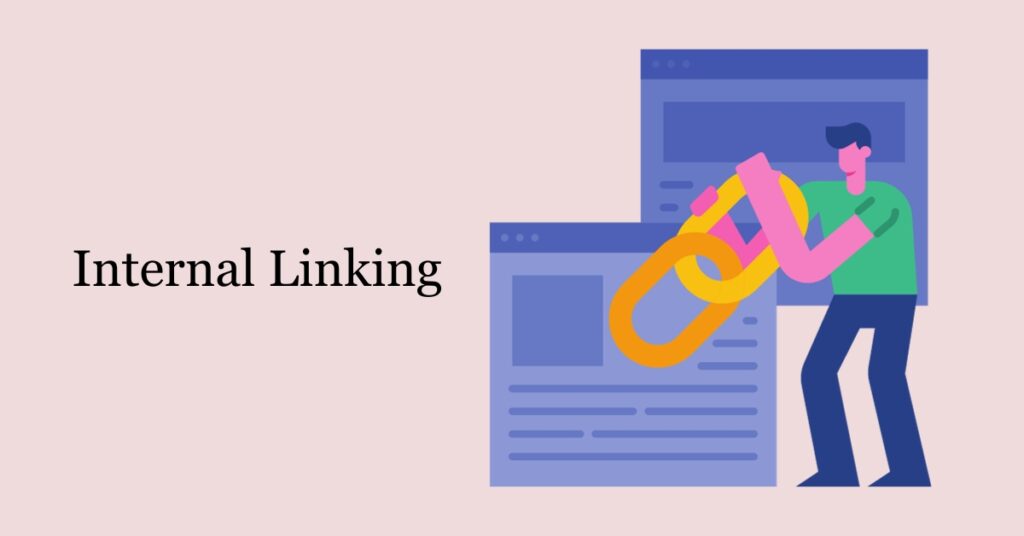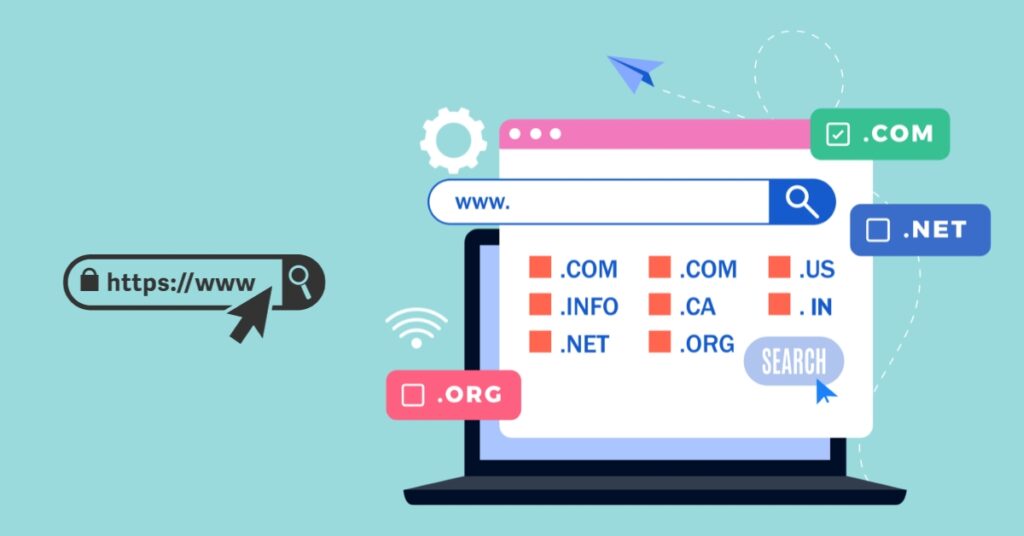By using on-page SEO, you can rank your website higher in Google’s search engine. It adjusts website content to match users’ search queries and increase search engine rankings. To do this, the title tag, meta description, and header tag need to be optimised. This way, you can significantly increase online exposure and organic traffic by making your website perform well in a competitive market. Your web page should appeal to Google to rank higher.
Some key elements of on-page SEO include:
- The page title and meta description: These snippets visible in the search provide a summary of the page content and should be ooptimisedwith relevant keywords.
- Headers and content: Headers like H1 and H2 tags highlight important topics on a page. The body content should also use keywords appropriately so search engines can understand the topic.
- Images and media: Images, videos, and other media should have descriptive filenames and ALT text containing keywords to add more signals about the content.
- Internal links: Links pointing users to other insightful content on your site improve navigation and help search bots discover more pages.
- URL structure: URLs containing keywords can boost rankings for those terms. A short, clean URL structure also helps.
The goal of on-page SEO is for both users and search engines to easily understand what a web page is about purely from the signals on the page itself. Proper on-page optimization improves visibility and traffic from organic search.
The importance of On-Page SEO
Improving on-page SEO is key to boosting your website’s search engine ranking and attracting more relevant traffic. Unlike off-page SEO, which involves building links and citations, on-page SEO directly optimises individual web pages.
These on-page elements are what search engines rely on to grasp each page’s topic, its connections to others, and the value of your content. Enhancing on-page SEO simplifies the process for search engines to crawl, index, and comprehend your content.
Specifically, strong on-page SEO helps in three key areas:
- Indexation – On-page optimization makes it more likely search engines will find, crawl, and index your important pages. This expands your presence in search results.
- Rankings – Optimized page elements like titles, headers, and content tell search engines your pages are relevant for certain keywords. This helps you rank the terms people are searching for.
- Click-throughs – Compelling page titles and meta descriptions help get clicks from search engine results pages. This drives qualified traffic to your site.
On-page SEO establishes your website as a trusted authority site worth ranking. It demonstrates the value you provide for searchers. Doing on-page SEO the right way is essential for any successful SEO strategy.
Optimizing Page Titles
Page titles, also known as title tags, are vital for on-page SEO. The title tag appears in the browser tab and search engine results pages, so optimizing it makes a big difference in click-through rates and rankings.
Ideal Length
Google truncates title tags longer than 512 pixels, so it’s best to keep page titles under 60 characters. Anything from 50 to 60 characters is ideal. This provides enough space for your main keyword and some complementary keywords while keeping it scannable.
Keywords
Each page’s title tag should contain your target keyword for that page. This tells search engines exactly what the page is about. Place the keyword close to the start of the title tag whenever possible.
Branding
While keywords are important, the page title also represents your brand in search results. Include your brand name at the end of the title tag to build brand visibility and recognition. For example, “Main Keyword: Complementary Keywords | Brand Name”.
Meta Descriptions

The meta description is the short paragraph that appears under your title tag in search engine results pages (SERPs). While meta descriptions don’t directly influence search engine rankings, they play an important role in click-through rates (CTRs) from SERPs.
An effective meta description:
- Is between 150 and and 160 characters. Google will cut off descriptions longer than 160 characters.
- Contains relevant keywords naturally. Don’t keyword stuff.
- Creates interest and compels the user to click. Use emotional triggers like “best”, “top”, “best-in-class”, etc.
- Provides a teaser for what the page is about. But don’t give everything away.
- Is unique for each page. Avoid duplicating meta-descriptions.
- Contains a call-to-action if relevant, like “Sign up now” or “Start your free trial”.
Put thought into your meta-descriptions. These snippets provide the first impression of your brand in SERPs. Compelling descriptions can significantly increase CTRs on your site.
Headings (H1, H2, etc.)
Headings are used to provide structure and hierarchy to your content. Search engines place a lot of importance on headings, especially your main H1 heading, as they indicate what the page is about.
Here are some tips for optimising headings:
- Your main H1 heading should contain your target keyword for the page. It should provide a concise and accurate description of the content.
- Use additional headings like H2 and H3 to break up content into logical sections and make it more readable. These subheadings can contain secondary keywords.
- Don’t make headings too long. The ideal length is under 65 characters.
- Make sure headings are descriptive and provide value to users, not just stuffed with keywords. Readers should get a sense of the content by skimming the headings alone.
- Don’t skip heading levels. Use them sequentially, like H2 should follow H1, and H3 should follow H2. This creates a proper hierarchy.
- Have a single H1 heading for each page. Multiple H1s can dilute their importance and confuse search engines.
- Use sentence case rather than title case for headings. It is easier to read. Capitalise only the first word and any proper nouns.
By optimizing your headings properly, you can signal to search engines what the page is about while also creating an easy-to-scan structure for users. Good headings boost on-page SEO as well as usability.
Image Optimization
Images on web pages provide visual interest and help communicate information to visitors. However, search engines like Google cannot actually see images. Instead, they rely on image metadata to understand the content of an image.
Properly optimising images for SEO requires paying attention to the following:
- Alt Text: Also known as “alt attributes”, alt text provides a text description of an image that will be displayed if the image fails to load on a web page. Search engines will use alt text to understand the content of images. The alt text should accurately summarise the image content in a concise way.
- Title: The title attribute provides additional information about an image, often describing it in more detail than the alt text. Search engines may use title text as well when trying to understand image content.
- File Names: Using descriptive and keyword-rich file names for images helps search engines understand what the image is about. File names like “newsletter-photo-january.jpg” are more useful than generic names like “image012.jpg”.
- Data-Attributes: HTML5 allows custom data attributes to be added to images, providing additional structured information about the image. This can help search engines better interpret image content and relevance.
By taking the time to optimize images on each page, website owners make it easier for search engines to index and rank image-heavy pages. Proper image SEO leads to better user experiences as well.
Internal Linking

Internal linking is an essential on-page SEO technique that involves linking from one page of your website to another. Proper internal linking helps search engines crawl and index your site more efficiently. It also enables users to navigate your content seamlessly.
When structuring internal links, aim to create links to related content that provide additional value for users rather than links intended solely for SEO. Construct a logical linking structure that connects pages through relevant links in the main content.
Linking Structure
- Link prominent keywords and phrases within your content to relevant pages that contain additional information.
- Link to high-priority pages frequently to indicate their importance. But avoid excessive linking that looks unnatural.
- Create links from topic pages to related subtopics. For example, link key product category pages to their respective product pages.
- Cross-link related content pages to provide multiple paths through your content.
- Link to supporting resources and linked content like glossaries, downloads, and related blog posts.
Anchor Text
- Vary your anchor text. Links with exact-match anchor text can appear manipulative.
- Use descriptive, conversational anchor text that reads naturally within the content.
- Include keywords in some anchor text. But focus on what makes logical sense for users.
- Avoid overuse of generic anchor text like “click here”, “this page”, “or article”. Add context.
- Don’t keyword stuff links with multiple forced keywords. Keep anchor text concise.
Well-structured internal linking improves SEO while guiding users through naturally interconnected content. Carefully consider the user’s perspective when linking related pages.
URL Structure

A website’s URL structure plays an important role in on-page SEO. The URLs should be formatted properly and optimised for keywords when possible.
- Use hyphens (-) instead of underscores (_) in URLs. Search engines see hyphens as word separators, making it easier to parse keywords.
- Avoid overly long URLs if possible. Concise URLs are easier for users to type and remember.
- Include primary keywords in URLs, but don’t “keyword stuff.” For example, example.com/blue-dress-shirts is better than example.com/products/12345.
- Create subdirectory pages to further segment your site’s structure and highlight categories. For example, example.com/shirts/blue-dress-shirts shows a hierarchy.
- Avoid excessive dynamic parameters like ?page=1 in URLs if you can use static versions.
- Make sure URLs are consistent. Don’t have multiple URLs leading to the same content.
- Create 301 redirects for any changed or outdated URLs to avoid dead links.
Having descriptive, keyword-rich URLs improves click-through rates from search engines. Users also get a better sense of what content lives on a page. Optimizing URL structure is an easy way to enhance on-page SEO.
Content Optimization
The text, multimedia, and formatting on your page are important on-page factors that can boost your SEO efforts. Here are some tips:
- Keywords: Use your target keywords naturally throughout the content – in headings, text, URLs, etc. Focus on topics and keywords you want the page to rank for. However, avoid keyword stuffing or over-optimizing solely for SEO. The content should flow naturally as useful information for users.
- Length: In general, pages that are longer and more content-rich tend to perform better in search results. Aim for substantial content over 300 words. However, quality content is more important than length, so don’t stuff your pages just to reach a word count.
- Formatting: Use formatting like bullets, numbered lists, bolded sections, and subheaders (H2 and H3 tags) to help organize your content and highlight key points. This improves both user experience and SEO.
- Multimedia: Incorporate relevant multimedia like images, videos, and infographics to engage users. Optimize images and videos by providing accurate alt text and file names. Avoid distracting, unrelated multimedia just for the sake of it.
- Mobile-friendly: Ensure your content displays well on mobile devices. Use short paragraphs, bullet points, and formatting to make pages easy to read on small screens. Avoid text-heavy pages that are difficult to scroll through.
- Unique and original content: Provide useful, original content. Avoid copying content from other sites. High-quality pages with distinctive content tend to rank better.
Targeting the proper keywords, creating high-quality content, and structuring your pages in an engaging way all contribute to effective on-page SEO.
Technical On-Page Factors
On-page SEO goes beyond just content and includes some critical technical elements of your website. Optimizing these can improve SEO and the user experience.
Site Speed
Site speed refers to how fast your website pages load. Google has stated that site speed is a ranking factor. Optimizing page speed can improve SEO, lower bounce rates, and increase conversions. Some ways to improve speed include compressing images, minimizing HTTP requests, enabling caching, optimizing code, and using a CDN.
Mobile Optimization
With more and more searches happening on mobile, having a mobile-friendly site is critical for SEO. This includes using a responsive design, eliminating software that is not mobile-compatible, optimizing for touch elements like buttons, and avoiding interstitials and pop-ups.
Structured Data
Adding structured data markup to your pages enables search engines to understand your content better. This can result in an enhanced display of your content in search results. Typical forms of structured data include schema.org microdata, JSON-LD, and RDFa.
Properly implementing technical on-page optimizations demonstrates to search engines that your site offers a good user experience. Combining this with solid content helps improve rankings and organic traffic.


3 comments
[…] On-page SEO involves optimizing individual web pages to enhance a website’s search engine visi…, employing tactics such as strategic keyword placement, compelling content creation, and improvements in URL structures and meta tags. […]
[…] engine optimization (SEO) is all about improving a website’s rankings in search engines like Google for relevant queries. The better optimized a site is for the keywords people are searching for, the […]
[…] website’s pages can be altered directly to enhance its SEO; this can be referred to as on-page optimization. Page titles and meta descriptions should be optimized, and target keywords should be used […]